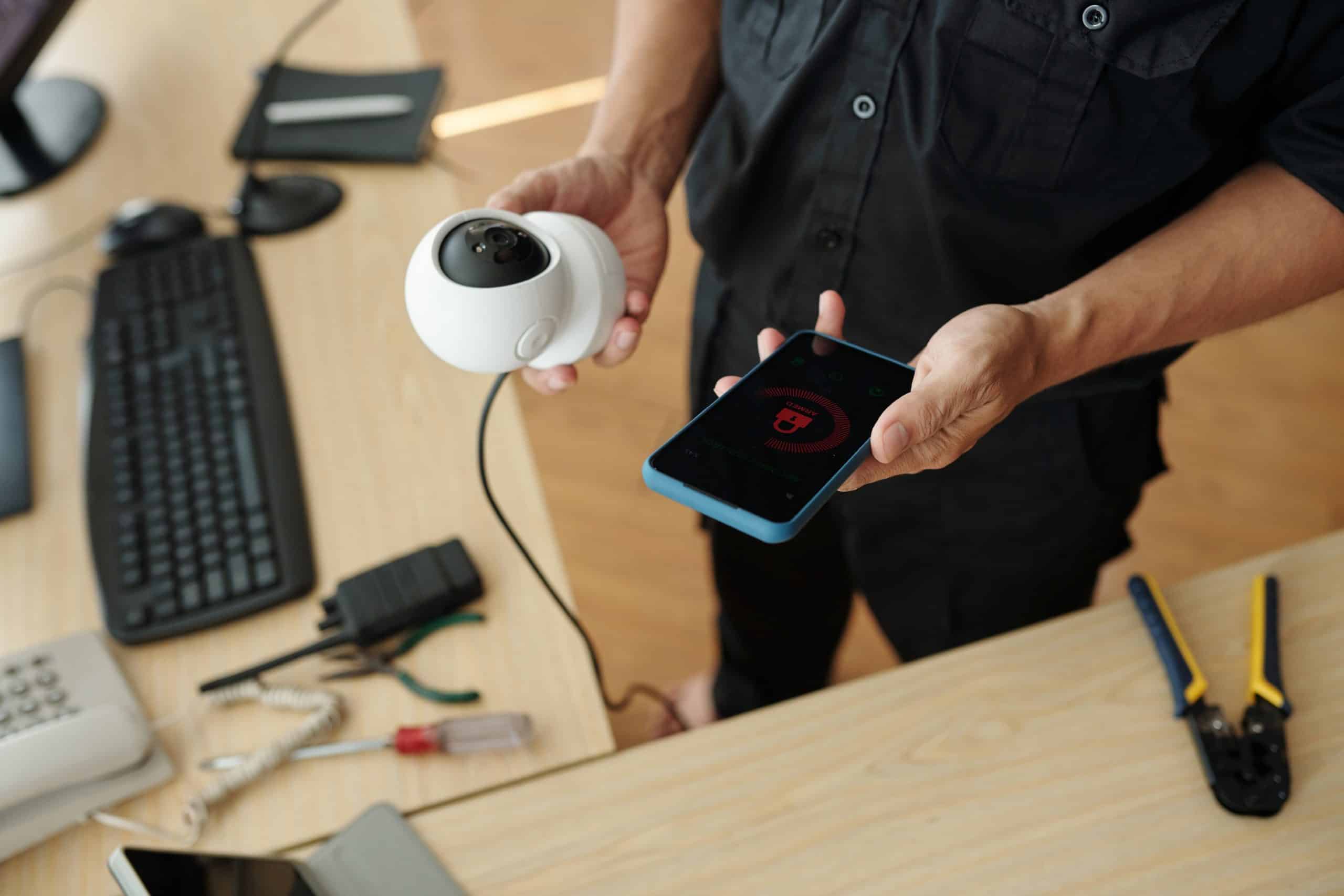Pets, much like humans, can sometimes exhibit unusual behaviors or show signs of discomfort that can indicate health problems. However, unlike humans, pets can’t communicate their discomfort verbally. It’s therefore essential for pet owners to find effective ways to monitor their pet’s health. Luckily, in this modern age of technological advancement, there are numerous non-invasive techniques available for pet health monitoring. From monitoring heart rate and blood pressure to measuring other essential health parameters, these techniques can provide valuable insights into the health of your beloved pet. This article will provide you with an in-depth look at some of the most reliable and easy-to-use non-invasive techniques for pet health monitoring.
How to Monitor Your Dog’s Heart Rate and Blood Pressure
Monitoring the heart rate and blood pressure of your pet, especially dogs, can provide critical information about their health. Both these measurements can help identify underlying health conditions before they become serious.
A voir aussi : How to Safely Incorporate a Balanced Diet for Exotic Birds?
For monitoring your dog’s heart rate, you can use devices like the ECG (Electrocardiogram) monitor. The ECG monitor is a non-invasive device that measures the electrical activity of the heart. It uses small, adhesive sensors attached to the dog’s body to record heart rhythms. The data collected can provide valuable insights into your dog’s heart health.
When it comes to blood pressure monitoring, there are several non-invasive monitors available on the market. These devices use a cuff that inflates around the dog’s leg or tail, similar to the method used for measuring human blood pressure. These readings can help detect any abnormalities in your pet’s circulatory system.
A voir aussi : How to Establish a Routine for Pets That Helps Reduce Separation Anxiety?
The Role of Anesthesia Monitoring in Pet Health
Anesthesia is a vital aspect of veterinary care, especially during surgical procedures. However, anesthesia can also present challenges, as it can impact a pet’s heart rate, blood pressure, and other vital signs.
Monitoring anesthesia in pets is done using a variety of non-invasive techniques. For instance, pulse oximetry is used to monitor the percentage of oxygen in the pet’s blood during anesthesia. This measurement gives the veterinary team real-time data about how well the pet’s lungs are working during the procedure.
Similarly, capnography, another non-invasive technique, is used to monitor the level of carbon dioxide in a pet’s system during anesthesia. This helps ensure that the pet is breathing correctly and is not retaining too much carbon dioxide.
The Advantage of Real-Time Pet Health Monitoring Systems
In recent years, real-time pet health monitoring systems have become quite popular among pet owners. These systems are designed to provide real-time data about a pet’s health, helping owners and veterinarians to make informed decisions quickly.
One such system is the pet health monitor, a device that can be attached to a pet’s collar. This device can track a range of data, including the pet’s heart rate, body temperature, and activity levels. This information can be accessed via a mobile app, providing a convenient way for pet owners to keep an eye on their pet’s health.
Another advantage of these systems is their ability to set alerts. For example, if a pet’s heart rate or temperature goes above or below a certain range, the system will send an alert to the owner. This feature provides peace of mind and allows for quick intervention if necessary.
The Importance of Regular Health Checkups
Although pet monitoring devices and techniques are incredibly useful, they are not a substitute for regular veterinary checkups. These checkups are an essential part of pet care, as they allow the veterinary team to conduct a thorough examination and perform necessary tests.
During these checkups, your veterinary team can examine your pet’s coat, teeth, and eyes, and listen to their heart and lungs. They may also perform blood tests to get a more detailed look at your pet’s overall health.
These appointments are also an excellent opportunity for pet owners to raise any concerns or questions they may have. For example, you might want to discuss changes in your pet’s behavior, or ask about diet and exercise recommendations.
While non-invasive pet health monitoring techniques can provide valuable insights into your pet’s health, they should complement, not replace, regular veterinary care. Remember, a healthy pet is a happy pet, and keeping track of your pet’s health can ensure they lead a long and happy life.
Utilizing Google Scholar for Research on Pet Health Monitoring Techniques
Google Scholar is an excellent tool for pet owners who wish to delve deeper into the science behind non-invasive pet health monitoring techniques. By searching for keywords like "heart rate," "blood pressure," "respiratory rate," "vital signs," etc., in the Google Scholar’s separate window, you can access a multitude of peer-reviewed articles.
For instance, you might come across research papers discussing the efficiency of different devices in monitoring changes in heart rate, blood pressure, body temperature, and other critical parameters. You might also find studies that evaluate the effectiveness of certain techniques in early detection of health issues in pets.
Moreover, Google Scholar can provide access to studies that talk about how monitoring systems can help monitor a pet’s sleep quality. Sleep patterns can be a vital clue to the overall health of your pet, as disruptions can indicate anxiety, discomfort, or even certain medical conditions.
Another keyword that may yield useful information is "pressure sensor." Pressure sensors can be found in some pet monitoring devices, and they measure blood flow and pulse rate. Understanding how these sensors work can help pet owners make an informed decision when choosing devices for their pets.
In all, the use of Google Scholar can provide pet owners with a wealth of information about non-invasive pet health monitoring techniques. This knowledge can help you make the best choices for your pet’s health.
Long-Term Health Monitoring with PetPace and Anesthetic Monitoring
The PetPace System has emerged as a popular choice among pet parents for long-term health monitoring. This comprehensive, real-time health monitoring system comes with a smart collar that records vital signs such as heart rate, respiratory rate, and body temperature. It also monitors activity levels, sleep patterns, and calories burned.
The system then sends this data to a cloud server, which can be accessed via a mobile app or a web portal. One standout feature of the PetPace system is its ability to open a separate window to show the detailed health data of your pet, making it easier for you to track changes over time.
Moreover, the PetPace system also includes an alert system. If your pet’s vital signs deviate from the normal range, the system sends real-time alerts to your phone, allowing for prompt intervention.
On another note, for pets undergoing surgical procedures, anesthetic monitoring is crucial. This non-invasive technique monitors the pet’s heart rate, blood pressure, and oxygen saturation during anesthesia. It provides real-time data, which is crucial for the veterinary team to promptly manage any changes in the pet’s vital signs.
In conclusion, non-invasive at-home pet health monitoring techniques, when used alongside regular veterinary checkups, can significantly enhance the care provided to pets. These tools, from heart rate and blood pressure monitors to comprehensive systems like PetPace, not only provide valuable insights into your pet’s health but also enable early detection of potential health issues. While Google Scholar is a valuable resource for researching these techniques, nothing replaces the advice and expertise of a qualified vet. So, while keeping abreast of the latest advancements, also ensure that your pet gets regular checkups for a long, happy, and healthy life.






